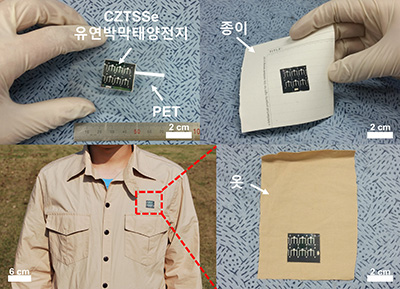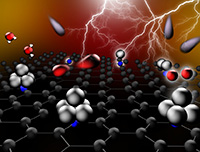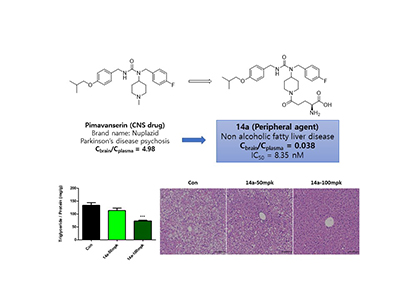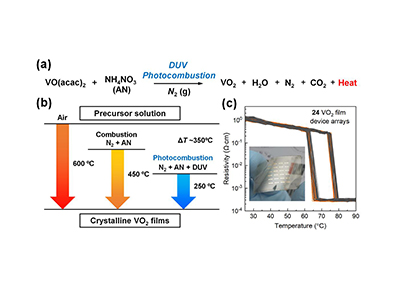01
Method of transferring flexible thin solar cell that can be placed on clothes,
paper, and PET developed
A research has revealed the possibility that wearable devices and solar cells which can be worn
like clothes are no longer things that can be seen in the future.
The research team led by Professor Dong-Seon Lee of the School of Electrical Engineering and
Computer Science at GIST has developed the transfer technology of CZTSSe (Copper-zinc-tin-
Sulfur-Selenium) flexible thin solar cell that can be placed on any types of surfaces such as clothes,
paper, and PET.
CZTSSe thin solar cell requires high temperature of more than 500 degrees during the production
process, so previous types of surfaces to create flexible solar cell was restricted to metal foil or
thin ceramic boards, thus, it wasn’t flexible and the cost was high. To overcome this, Prof. Dong-
Seon Lee's research team was able to materialize CZTSSe thin film solar cell regardless of the type
of board by transferring CZTSSe thin film solar cell completed on glass board onto flexible board.
CZTSSe thin film solar cell produced on glass board through high temperature process had the
glass removed through wet etch using mechanical etching and hydrofluoric acid. Then, CZTSSe
thin film solar cell used protective layers like heat annealing tape to transfer onto the desired
board such as clothes, paper, and PET and more than 91% of performance was maintained even
after the transfer.
Prof. Dong-Seon Lee stated that “The transfer method of flexible thin solar cell of this research
performance can not only be applied to CZTSSe thin solar cell but also to other thin film solar
cells and has unlimited application such as wearable devices, IoT, and drones. In the future, mass
production and commercialization of the technology can be expected”.
02
Fuel Cell Electric Vehicles (FCEVs) expected to become affordable by improving
performance and durability of platinum catalyst for hydrogen fuel cell
Hydrogen fuel cells, a highly-efficient, eco-friendly energy that does not emit any pollutants except
water, is gaining attention as sustainable energy which can become future new growth that is
clean and safe because it emits less carbon dioxide than electric vehicles.
Professor Jaeyoung Lee’s research team at the School of Earth Sciences and Environmental
Engineering at GIST improved the performance and durability of platinum catalyst of hydrogen
fuel cell by using carbon containing lone pair.
This platinum catalyst developed in this research not only has outstanding performance compared
to the existing platinum catalyst for oxygen-reduction reaction caused by platinum-nitrogen atom
binding but also enhanced durability by minimizing the amount of platinum that is eluted during
the operation of hydrogen fuel cell caused by powerful atom binding.
Prof. Jaeyoung Lee stated that “By revealing the role of lone pair for carbon support in the
platinum catalyst formation process and reaction mechanism, it was possible to improve
performance and durability of platinum catalyst in hydrogen fuel cells. By enhancing the
manufacturing economic efficiency of FCEVs, it is expected to contribute significantly to the
hydrogen economy”.
03
Possibility for developing non-alcoholic fatty liver disease (NAFLD) medicine opened
Fatty liver in which more than 5% of fat is built up in the liver rarely has any symptoms, and it
progresses into hepatocirrhosis or the fatty liver deteriorates further into steatohepatitis, and once
it progresses into hepatocirrhosis, the occurrence rate of liver cancer increases. In particular, nonalcoholic
fatty liver disease (NAFLD) causes obesity, diabetes, and metabolic syndrome and these
are increasing worldwide. However, there is no treatment drugs that have been approved for
non-alcoholic fatty liver disease so the development of medicine is most urgent.
The research team of Professor Jin-Hee Ahn in the Department of Chemistry at GIST developed
serotonin (5HT) acceptor inhibitor (substance that inhibits the catalytic action of enzyme=negative
catalyst) in peripheral tissues, opening the possibility of developing medicine for non-alcoholic
fatty liver disease.
Prof. Jin-Hee Ahn Jin Hee’s team found a new compound that reacted in peripheral tissue from
the previously known Serotonin Type 2 (5HT2A) inhibitor and Pimavanserin, a medicine for mental
illness related to Parkinson disease which was approved by the FDA in 2016. As a result, they were
able to find a compound with outstanding efficacy that usually reacted in the peripheral tissue by
reducing the blood-brain bBarrier penetration (IC50 = 8.35 nM). This compound has good
microsome stability within the liver and did not inhibit CYP and hERG. In addition, as a result
of testing the efficacy of 8 other serotonin acceptors, it was confirmed that 5HT2A was
selectively inhibited. As a result of conducting animal testing in a mouse on high fat diet using
this compound, fat accumulation within the liver and adipose were relieved, glucose tolerance
improved, and the weight of the liver decreased.
Prof. Jin-Hee Ahn Hee stated that “This research achievement identified new targets for the
treatment of non-alcoholic fatty liver diseases (steatohepatitis) with the development of this
compound. It is expected to be used in the new drug development in the future.”
04
Development of photocombustion for switching element that bends
The joint research team of Professor Bong-Joong Kim in the School of Materials Science and
Engineering and Professor Myung-Han Yoon at GIST developed a deep ultraviolet ray processing
method using sol-gel solution process and was the first to succeed in creating vanadium dioxide
(one of the transfer metal oxide) multi-crystalline thin film on large-scale flexible plastic boards.
In this research, they succeeded in lowering the critical temperature from 500 degrees to 250
degrees in order to create crystalline structure vanadium dioxide thin film on polyamide boards
through deep ultraviolet ray photocombustion process based on the sol-gel solution process. This
new concept of photocombustion processing method involves adding ammonium nitrate that can
act as an oxidizer for combustion with vanadium dioxide precursor in an appropriate ratio then
irradiating Deep Ultraviolet Rays (DUV). By generating radical that effectively removes organic
impurities and induces metal-oxygen binding, it is able to reduce the crystallization significantly.
Professor Bong-Joong Kim and Professor Myung-Han Yoon stated that “This research achievement
is the first result of synthesizing vanadium dioxide which is gaining attention for its transition
characteristics between insulator-metal onto plastic boards by using solution process and
securing reliability of material, and it is expected to be utilized in large-scale flexible switching and
electronic elements.” Furthermore, he evaluated that “It has opened a new prospect, enabling
deep ultraviolet ray photoactivation which was usually applied to amorphous sol-gel metal oxide
semi-conductor for display to be used in various crystalline functional metal oxide thin films,
beyond metal oxide insulators.”
 01
01
 02
02
 03
03
 04
04
